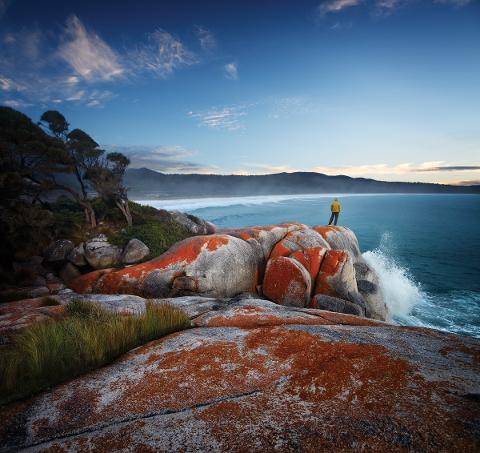Look across Mount William National Park and you'll see the spikey stands of the endemic Xanthorrhoea plant cutting up colourful fields of wildflowers and lichen-covered boulders. It's hard not to fall in love with this northeast National Park where you can take solemn strolls on unbelievably beautiful beaches with nobody else in sight.
Created to protect the coastal heathlands and dry sclerophyll plants of far northeast Tasmania, this park has been expanded over the years. It's now so large that you'll have no problem finding your own secluded patch of land where you have personal encounters with Forester kangaroos, wombats, echidnas, Tasmanian devils, Bennetts wallabies and pademelons.
In the extreme northeast corner of Tasmania, Mount William National Park is most easily accessible from the inland city of Launceston. Launceston sits 166 kilometres away and the drive takes about two hours and 20 minutes. Hobart is 333 kilometres to the south and that drive will take you four hours and 30 minutes. The drive from Devonport is 240 kilometres long taking three hours and 15 minutes.
Size
The park takes up 114 km² of the northeast coast of the Tasmanian mainland.
Nature walks bring you to a variety of landscapes throughout the park, or you can choose to just take a stroll along the azure blue waters of the park's beaches. The Mt Williams Summit takes you to the highest peak in the park. Despite its elevation, the walk is an easy 90-minute return stroll that gives you breathtaking views of the Bass Strait and its many islands beyond. Wildlife lovers should take the two-hour return walk Cobblers Rocks that meanders to a lagoon full of wildlife.
Birdwatching is a popular pastime in northeast Tasmania. Grab your binoculars to spot wrens, honeyeaters, robins, pardalotes and finches. Migratory birds such as the mutton bird, silver-eye and swamp harrier can be seen seasonally. Seabirds like the albatross, white-bellied sea eagle and the wedge-tailed eagle commonly fly high overhead.
Many of Mt Williams National Parks reaches are remote and great for wildlife spotting. Forester kangaroos, echidnas, wombats, Tasmanian devils, Bennetts wallabies and pademelons all come out at dusk for a feed. Bring a torch to spot some of these nocturnal creatures at night.
Fishing, swimming, snorkelling and diving are popular along the coasts of Mt Williams National Park. Georges Rocks and Eddystone Point provide for colourful reefs to make for some of the best snorkelling and diving in the state. Sea bream and Australian bass are caught in abundance in Ansons Bay.
Geological Features, Environment and Climate
The coastal heathlands of the park are home to the Xanthorrhoea plant; a skirt-like grass bush with a singular tall spike spire. You'll also find plenty of wide, sandy beaches at the park as well as lichen-covered boulder fields. And, every summer and spring, the fields of Mt Williams National Park come alive with wildflowers.
Expect pleasant temperatures during your visit to the park at any time of year. The days vary from warm to cool and the nights are a perfectly crisp temperature for sleeping. It rains year-round though summer is drier than winter. Pack a light jacket.
Wildlife and Birds
Many of Mt Williams National Park's creatures are nocturnal. The Forester kangaroo, Bennetts wallaby, pademelon, Tasmanian devil and wombat can all be seen at dusk or at night. It's best to bring a torch. The park also provides habitat for eastern grey kangaroos, echidnas and brush-tailed possums.
Bird life is abundant in the park. Honeyeaters, wrens, robins, pardalotes and finches fly inland while albatross, white-belled and wedge-tailed eagles soar over the coasts. Migratory birds such as the mutton bird, silver-eye and swamp harrier fly about the park on a seasonal basis.
Facilities and Camping
There are well-maintained campgrounds throughout the park. Most campsites provide fireplaces, picnic tables and pit toilets. You'll have to bring your own water to the park and you'll find an emergency shelter near campground No. 4 at Stumpy's Bay.
Mt Williams National Park was established in 1973 as an important habitat for dry sclerophyll plants. The park was named after the prominent black scientist William F Fearon.
Mr Williams National Park has been expanded many times over years. In 1980, the park expanded from 8.640 hectares to 13,806 hectares. In 1999, it expanded one last time to 18,439 hectares. It now provides habitat for many wild creatures and solitude for nature lovers.




































